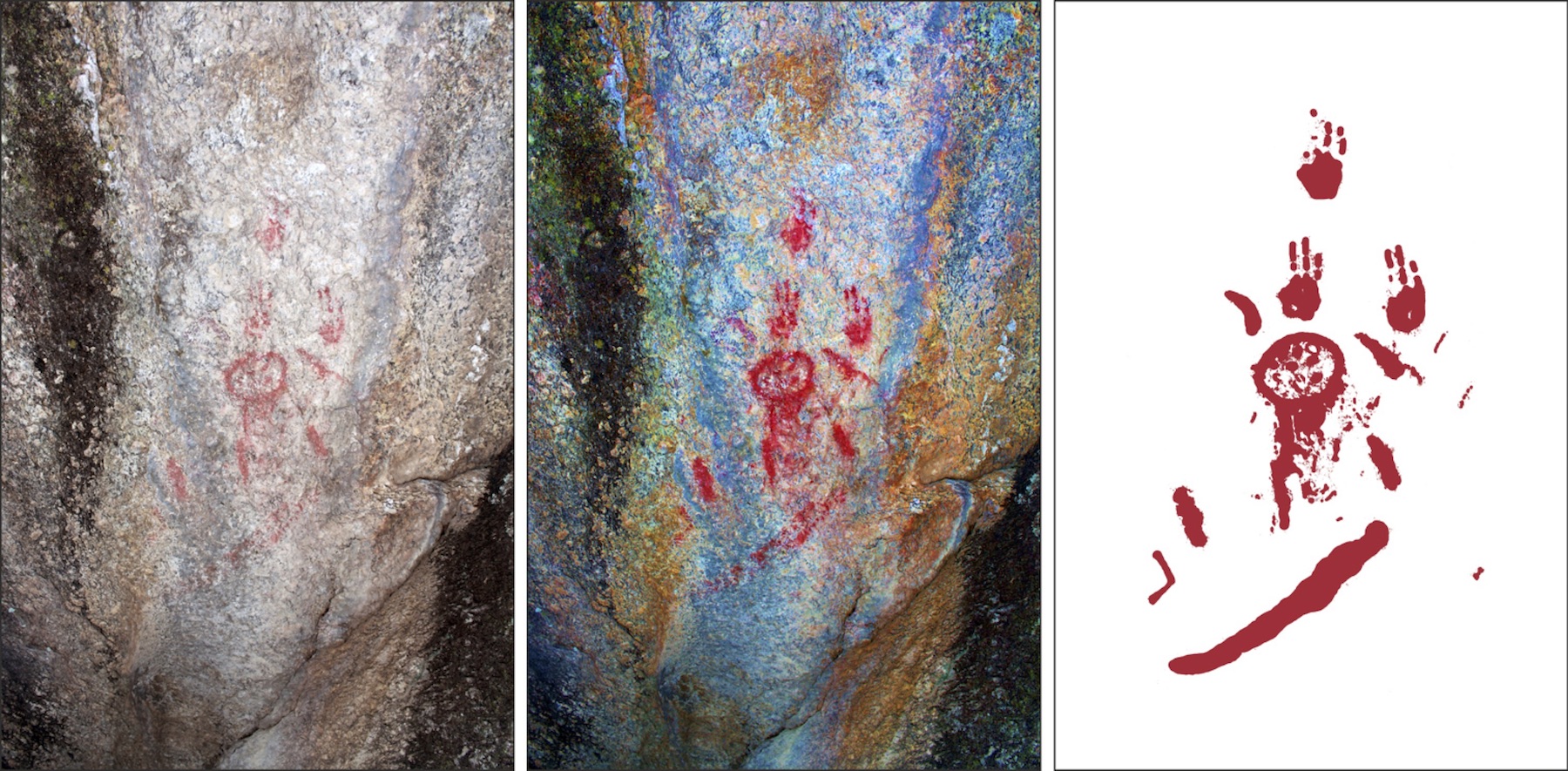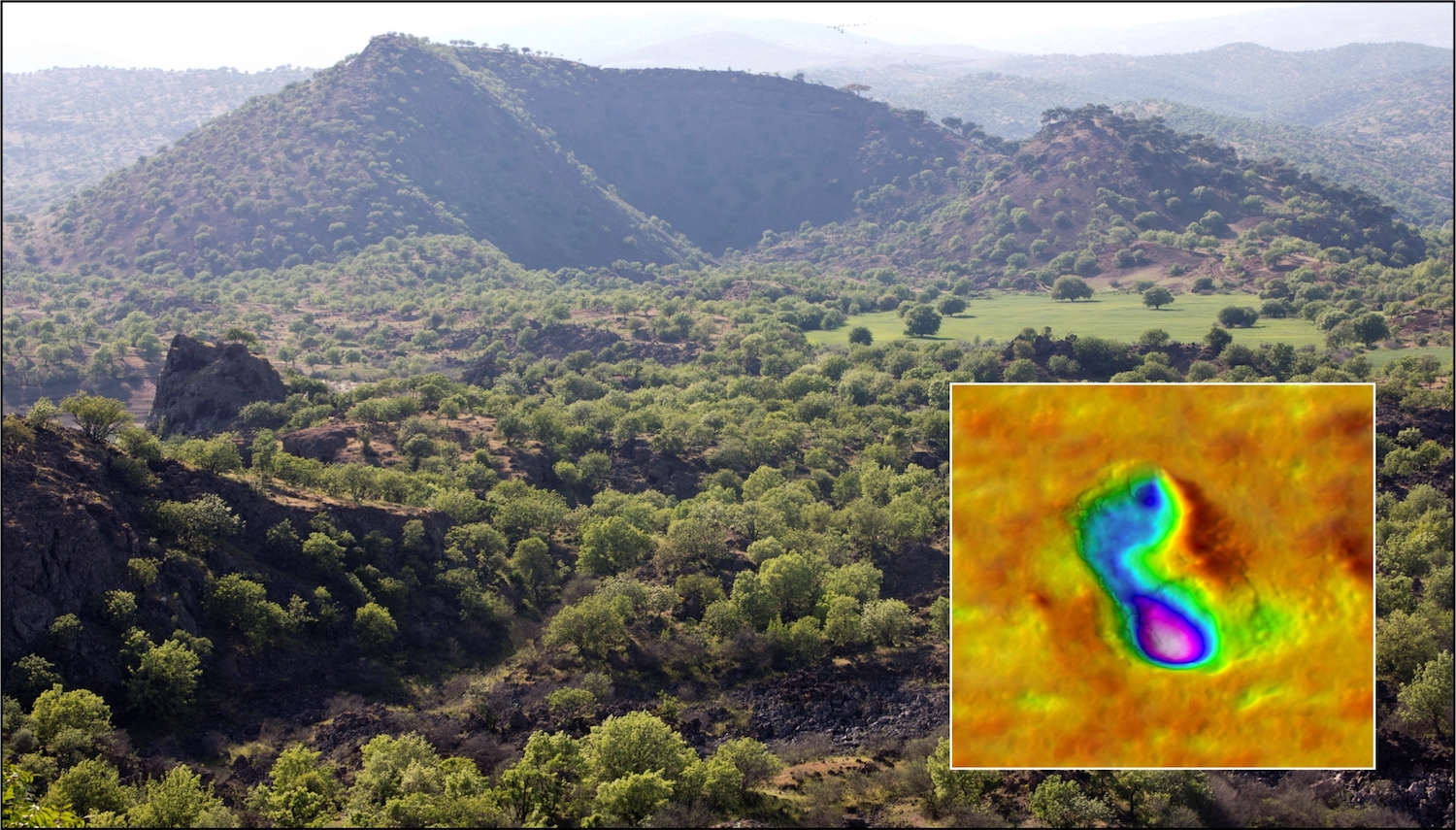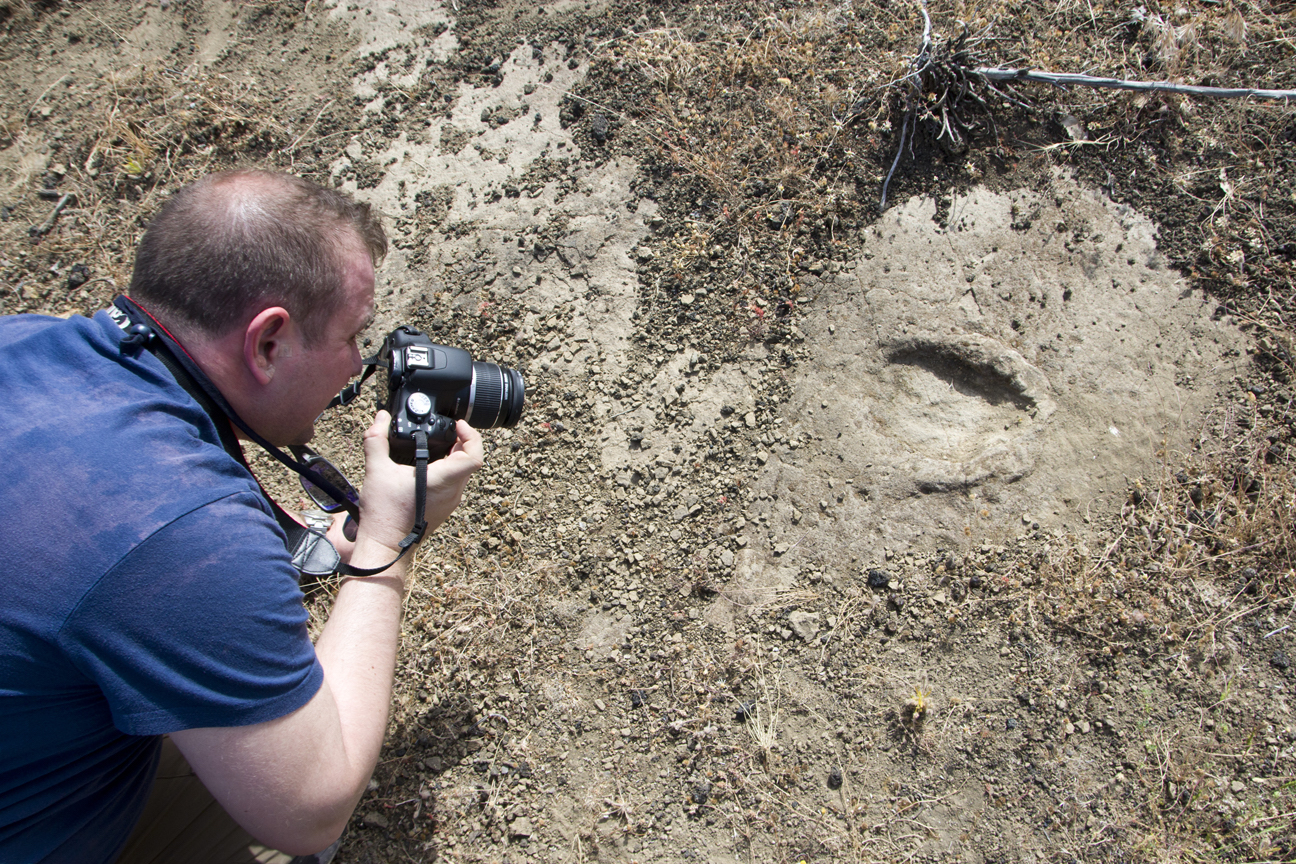Ancient People Watched a Volcano Erupt. This May Be Their Illustration of It.

After a treacherous volcanic eruption during the Bronze Age, curious humans and their canine companions hiked closer to the volcano, where they left footprints in the fine-grained volcanic ash.
The hydrovolcanic eruption, which occurred when a superheated mix of magma and groundwater exploded, was so impressive, the humans even illustrated it in ochre on a nearby rock in what is now western Turkey, according to a new analysis.
"I think that people excited by the noise of the first hydrovolcanic eruption then started to approach the eruption site, walking on the wet hydrovolcanic ash and leaving the footprints behind," study lead researcher İnan Ulusoy, an assistant professor in the Department of Geological Engineering at Hacettepe University in Turkey, told Live Science in an email. "Anyone can imagine that this is an event that one may face rarely in a lifetime. This may have given the inspiration to the Bronze Age people to leave the note behind." [See images of the footprints and rock art from Turkey]
Researchers first learned of the ancient footprints in the 1960s, when workers building the Demirköprü dam near Sindel village in Turkey noticed the well-preserved tracks. These prints are now known as the "Kula footprints" because they're in Kula Volcanic Geopark, where Çakallar volcano rises in a majestic peak.
Over the years, researchers have dated the Kula footprints, but not always correctly. The first attempt, in 1968, suggested the prints were 250,000 years old, prompting those researchers to attribute the tracks to Neanderthals (Homo neanderthalensis).
Other attempts have led to more recent, but also iffy dating. To get to the bottom of the mystery, the researchers of the new study used two dating methods to pinpoint when the footprints were made. The first was radiogenic helium dating, which measures the decay of uranium and thorium into helium, to calculate the eruption age of tiny zircon crystals found at the site. The team also used cosmogenic chlorine exposure dating, which measures levels of radioactive chlorine that forms when cosmic radiation slams into calcium or potassium atoms. Cosmogenic chlorine exposure dating reveals the amount of time that volcanic rocks have sat near Earth's surface.
The results showed that the footprints were made 4,700 years ago, meaning it couldn't have been Neanderthals (who went extinct about 40,000 years ago), but rather modern humans, who left them.
Get the world’s most fascinating discoveries delivered straight to your inbox.
"The two independent dating approaches showed internally consistent results and collectively suggest that the volcanic eruption was witnessed by Homo sapiens during the prehistoric Bronze Age, 4,700 years ago and 245,000 years later than originally reported," study co-researcher Martin Danišík, a research fellow in Earth and planetary sciences at Curtin University in Perth, Australia, said in a statement.
Small prints at the site indicate that these ancient people used walking staffs and were accompanied by an unknown species of Canis, a genus that includes wolves, coyotes and dogs, the researchers added.
Moreover, a previous analysis suggested that these ancient people were running away from the eruption. But after examining the distances between the steps, it appears that whoever left them was walking at normal speeds, the researchers and earlier analyses found.
"Our observations confirm that the traces show a walking direction from west to east towards the Çakallar cone," the researchers wrote in the study. "This may indicate a brief hiatus after ash deposition, which was long enough for humans to approach the volcano after its initial outburst."
Red rock art
The new date sheds light on a spectacular piece of rock art, long known to locals but only scientifically discovered in 2008. This rock art is a mere 1.2 miles (2 kilometers) from the fossil footprints, about a 20-minute walk away, Ulusoy said. [In Photos: Ancient Rock Art Depicts Total Solar Eclipse in Chaco Canyon]
The footprints indicate that humans witnessed the volcano's eruption, Ulusoy said. So, it's possible that the art, known as the Kanlitaş rock painting, may depict erupting rocks and lava flows, he said. The illustration shows a crater-like circular shape in the middle, with a line underneath that may represent lava flowing out of the volcano, he said. Around the crater are lines, which may represent volcanic vents, and thumbless handprints, the researchers added.
It's possible that these ancient people were among the world's first volcanologists — that is, some of the first people to see and then record a volcanic eruption, the researchers said.
The study was published in the May issue of Quaternary Science Reviews.
- Photos: Ancient Rock Art of Southern Africa
- Photos: Ancient Rock Art Sheds Light on Israel's 'Dark Ages'
- Photos: Prehistoric Rock Art Hints at Elite Class on Kisar
Originally published on Live Science.

Laura is the managing editor at Live Science. She also runs the archaeology section and the Life's Little Mysteries series. Her work has appeared in The New York Times, Scholastic, Popular Science and Spectrum, a site on autism research. She has won multiple awards from the Society of Professional Journalists and the Washington Newspaper Publishers Association for her reporting at a weekly newspaper near Seattle. Laura holds a bachelor's degree in English literature and psychology from Washington University in St. Louis and a master's degree in science writing from NYU.




